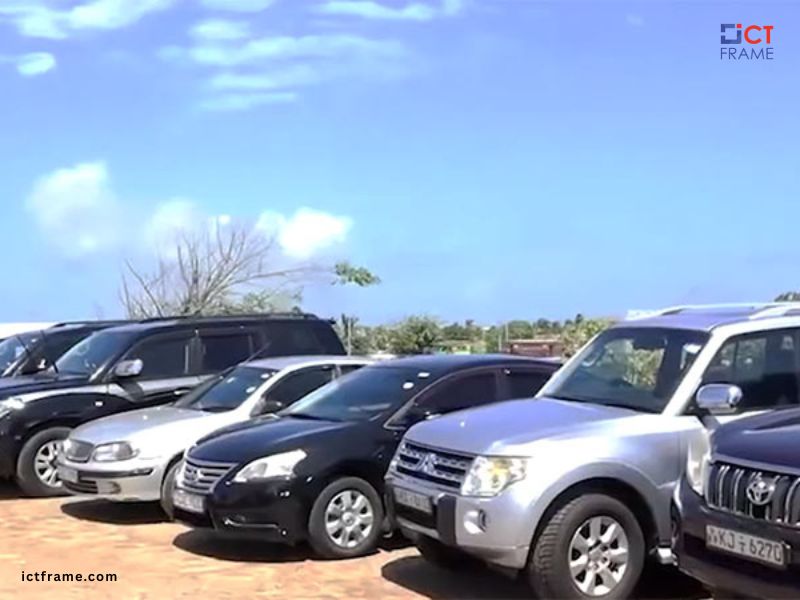The Cost of Austerity: Government Vehicle Return Transparency Forces Parliament Officials to Comply
Government Vehicle Return Transparency
9th October 2025, Kathmandu
In a significant move toward fiscal austerity and public government vehicle return transparency, a total of 21 vehicles previously used by former and current officials of the Federal Parliament Secretariat have been recalled.
Government Vehicle Return Transparency
This action follows a recent Cabinet decision to revoke privileges previously extended to former office bearers.
The move, fueled by public pressure and the recent Gen Z protests, signals a decisive shift toward curbing misuse of state resources and enforcing stricter financial discipline across all government arms.
Parliament Secretariat spokesperson Ekram Giri confirmed the return of the vehicles. He noted that nearly all former Speakers have complied.
This swift action reflects the interim government’s commitment to implementing austerity measures decided after the socio-political upheaval on September 8–9 (Bhadra 23 and 24).
The decision specifically revokes vehicle privileges for former officials and ends the provision of personal secretaries for Members of Parliament.
Vehicles Recalled Across the Parliamentary Spectrum
The vehicles returned represent a broad cross-section of current and past officials within the legislative body. The secretariat actively worked to enforce the new government mandate.
All former Speakers, except for former Speaker Taranath Ranabhat, have returned their official vehicles. Ranabhat has, however, informed the Secretariat he will soon comply.
The Secretariat’s records noted that former National Assembly Chair Ganesh Prasad Timilsina had been using a vehicle without a formal Cabinet decision authorizing the facility, underscoring the previous laxity in protocol that the new directive aims to correct.
The Cabinet decision mandates that vehicle privileges for former office bearers, which were often granted through ad-hoc Cabinet decisions, must now cease, forcing an immediate reckoning for long-held perks.
The directive also affected currently serving officials, though their compliance reflects the enforcement of the new austerity rules.
Vehicles provided to 10 thematic committee chairpersons of the House of Representatives have been returned. The chairpersons of two joint committees also returned their vehicles.
These committees, including the Parliamentary Hearing Committee and the Committee on Monitoring the Implementation of Directive Principles and State Policies, involve members from both legislative houses.
Among the seven vehicles used by the chief whips of major political parties, five have been successfully returned.
The vehicles belonging to Santosh Pariyar, chief whip of the Rastriya Swatantra Party, and Gyanendra Shahi, chief whip of Rastriya Prajatantra Party, were unfortunately destroyed during the Gen Z movement on September 8-9.
This destruction highlights the chaotic and disruptive environment that ultimately led to the government’s decision on privileges.
The Digital Age Demand for Accountability
The core push for government vehicle return transparency is rooted in the public’s demand for accountability and less wasteful governance.
The recent protests, largely driven by younger citizens and amplified on digital platforms, focused intensely on symbols of elite privilege and corruption.
The government’s decision is a direct response to public outrage over luxurious facilities extended to officials without clear legal basis, especially amid national economic struggles.
By revoking vehicle facilities and secretarial staff for MPs, the interim government directly addresses the public’s perception of “unproductive expenditure.”
This demonstrates that the political system is listening to the calls for austerity and ethical governance. For the Federal Parliament Secretariat, recovering these vehicles is a crucial step in restoring public trust in the legislative body.
Transparency in asset management, particularly high-value assets like vehicles, becomes a key metric for good governance. The Secretariat is actively showing its compliance and cooperation with the new, stricter fiscal rules.
Conclusion: A New Era of Fiscal Scrutiny
The successful retrieval of 21 vehicles marks a significant, albeit challenging, step towards fiscal responsibility. While the return of one former Speaker’s vehicle remains pending, the overall compliance rate from former and current officials is high.
This push for government vehicle return transparency is more than just an administrative task; it is a political statement.
The government is signaling that the era of undocumented privileges and unmonitored use of state resources is over.
Future ICT systems must incorporate robust digital tracking and audit mechanisms to prevent similar misuse of state assets, ensuring that accountability is not a matter of political will, but a matter of institutional design.
For more: Government Vehicle Return Transparency









